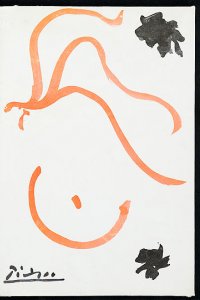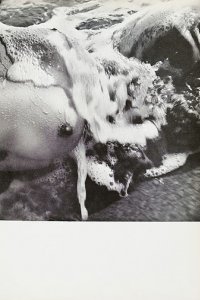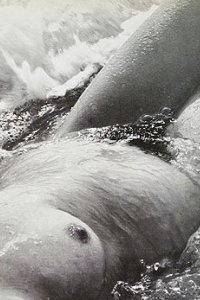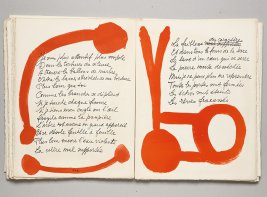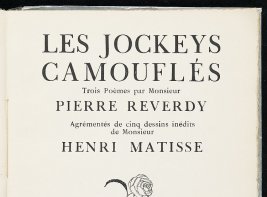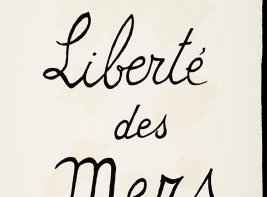Corps mémorable
Year: 1957
Author: Paul Éluard (1895 - 1952)
Photographer: Lucien Clergue (1934 - 2014)
Artist: Pablo Picasso (1881 - 1973)
Publisher: Pierre Seghers, éditeur
Bibliographical description
Description: Corps mémorable / [texte de] Paul Éluard ; couverture par Pablo Picasso ; avec un poème liminaire de Jean Cocteau ; et 12 photogr. par Lucien Clergue – Paris : Pierre Seghers, éditeur, 1957 – 37 p., [14] bl. pl. : ill. ; 28 cm
Printer: Jean Paul Vibert (Grosrouvre)
Bibliography: Bénézit 10-873 ; Saur Allgemeines Künstler-Lexikon 19-529
Shelfmark: KW Koopm L 514
References
- Paul van Capelleveen, Sophie Ham, Jordy Joubij, Voices and visions. The Koopman Collection and the Art of the French Book. The Hague, Koninklijke Bibliotheek, National Library of the Netherlands; Zwolle, Waanders, 2009
- Paul van Capelleveen, Sophie Ham, Jordy Joubij, *Voix**et visions. La Collection Koopman et l'Art du Livre français*. La Haye, Koninklijke Bibliotheek, Bibliothèque nationale des Pays-Bas; Zwolle, Waanders, 2009
- Paul Éluard, Derniers poèmes d'amour. Paris, Seghers, 1962
- Paul Éluard, Œuvres complètes. Paris, Gallimard, 1968
- Fabien Simode, 'Régions, Portfolio, Lucien Clergue, né photographe?: Première rétrospective de l'Académicien en France', in: L'œil, 591 (2007), p. 80-85
- Violaine Vanoyeke, Paul Éluard: Le poète de la liberté. Paris, Julliard, 1995

